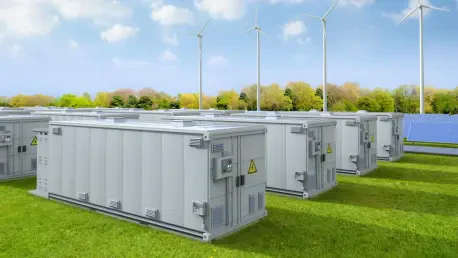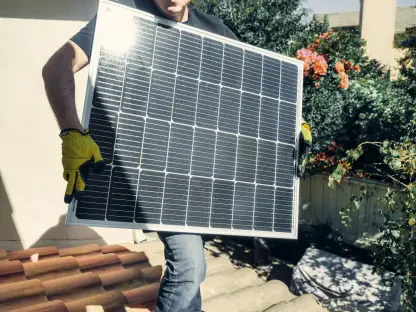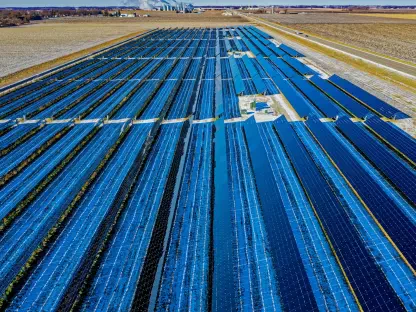In recent years, the Village of South River, alongside other communities in Almaguin Highlands, has expressed strong opposition to the proposed development of a lithium battery energy storage system by SolarBank on Peggs Mountain Road in Armour Township. This sentiment is also shared by the Village of Burk’s Falls, which officially stated its opposition in March. While the Independent Electricity System Operator (IESO) had approved the project intending to enhance Ontario’s grid reliability, the controversy hinges on the proposed location rather than the technology itself.
Community Concerns and Environmental Impacts
Fire Preparedness and Safety Issues
Concerns regarding the readiness of local fire departments to manage potential fires associated with lithium battery storage systems have dominated community discussions. At a public information session hosted by SolarBank on April 7 in Katrine, approximately 150 attendees questioned the project’s risks and the capability of local emergency services to handle potential incidents effectively. The installation of these large-scale energy storage systems has prompted apprehension about potential battery fires, which can be challenging to contain and hazardous to both people and the environment.
Despite assurances from SolarBank’s director of business development, Ina Lila, that the chosen site met the IESO’s system requirements and utilized technology minimizing environmental risks, community members remained skeptical. Lila highlighted that the project employs lithium iron phosphate batteries, a safer alternative containing no heavy metals like nickel and cobalt, thereby reducing the risk of water contamination. Furthermore, SolarBank pledged to work closely with local fire departments to provide comprehensive training and equipment necessary to handle any battery-related emergencies.
Environmental and Community Impact
Environmental concerns extend beyond fire safety, as residents worry about the broader impact of the project on the local ecosystem and community lifestyle. Studies on potential environmental impacts have been conducted, and the application for the project is awaiting peer review before a final decision is made. Despite these efforts, many residents fear the long-term consequences of integrating such advanced technology into their rural environment. Questions about noise pollution during construction and operation, disruptions to wildlife habitats, and the visual impact on the landscape persist.
Local municipalities, including South River and Burk’s Falls, have maintained a steadfast stance on opposing the development due to these unresolved concerns. The broader sentiment reflects resistance to infrastructural changes seen as threats to the community’s health and tranquility. This opposition is not rooted in a rejection of renewable energy but rather in the demand for responsible and thoughtful integration that ensures the safety and well-being of residents and the environment alike.
Balancing Technological Advancement and Community Assurance
Technology and Environmental Safeguards
SolarBank has undertaken several initiatives to assure the community of the project’s safety and benign environmental impact. Using lithium iron phosphate batteries is a strategic choice due to their stability and lower environmental footprint compared to traditional lithium-ion batteries containing harmful metals. This decision is part of a broader effort to align with stringent environmental regulations and to alleviate community anxieties about contamination and sustainability.
Further, the company emphasizes its collaboration with local stakeholders to align the project with the community’s interests. Continuous dialogue and transparency about the project’s specifics are core components of SolarBank’s strategy to build trust and address the inhabitants’ concerns. This includes outlining how the technology works, precautionary measures employed, and potential benefits such as enhanced grid reliability and future resilience through renewable energy storage.
Municipal and Resident Responses
Despite these efforts, local authorities and residents continue to voice opposition, emphasizing the need for an alternative location that poses fewer perceived risks to the community. Municipal leaders argue that while they support advancements in energy storage and renewable technologies, the welfare and safety of their constituents must take precedence. This stance is reflective of a broader advocacy trend in local governance, where infrastructural projects are critically evaluated for impacts on local communities and environments.
The robust feedback from community members and the resistance from municipalities exemplify the challenges faced in implementing technological projects in established communities. While the emphasis is often placed on the macro benefits such as enhanced grid reliability and cleaner energy, it is clear that micro-level impacts, specifically local safety and environmental health, play a significant role in community acceptance and project success.
Future Implications and Considerations
In recent years, the Village of South River and various communities in the Almaguin Highlands have voiced strong resistance to SolarBank’s proposed lithium battery energy storage system on Peggs Mountain Road in Armour Township. This opposition is not limited to South River; the Village of Burk’s Falls also formally stated its disapproval in March, reflecting widespread concerns. Although the Independent Electricity System Operator (IESO) had green-lit the project with the aim of bolstering the reliability of Ontario’s electricity grid, the controversy centers on the planned location rather than the technology itself. Residents fear the environmental impact on Peggs Mountain Road, which is treasured for its natural beauty and recreational value. Critics argue that the project would disrupt the area’s ecosystem and could have long-lasting negative effects on local wildlife and plant life, proposing that alternative locations should be considered to balance the need for energy storage with environmental protection.









